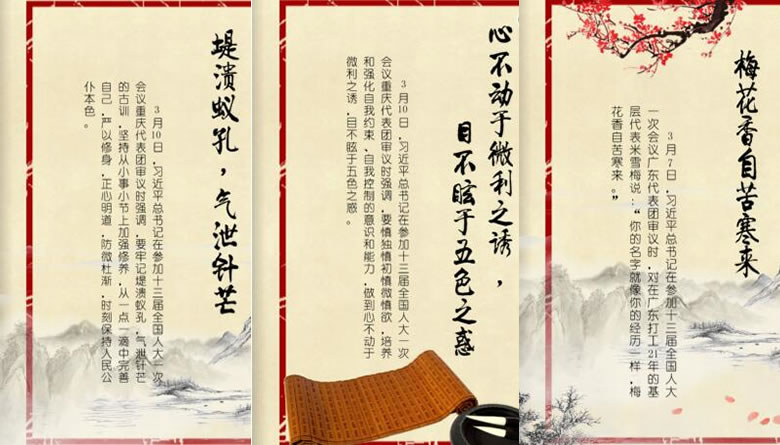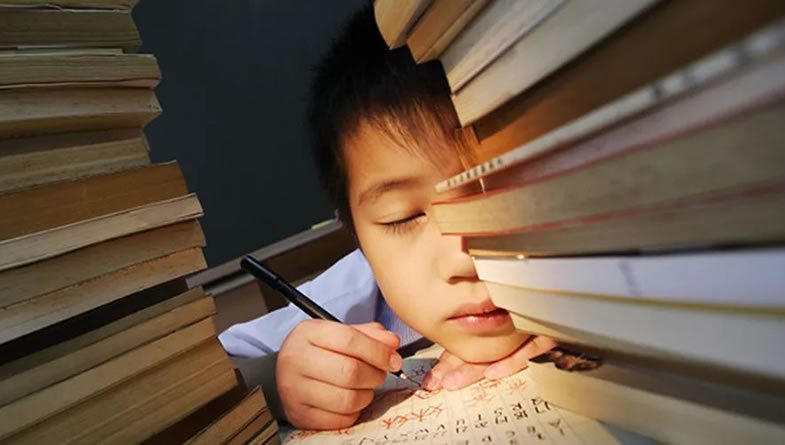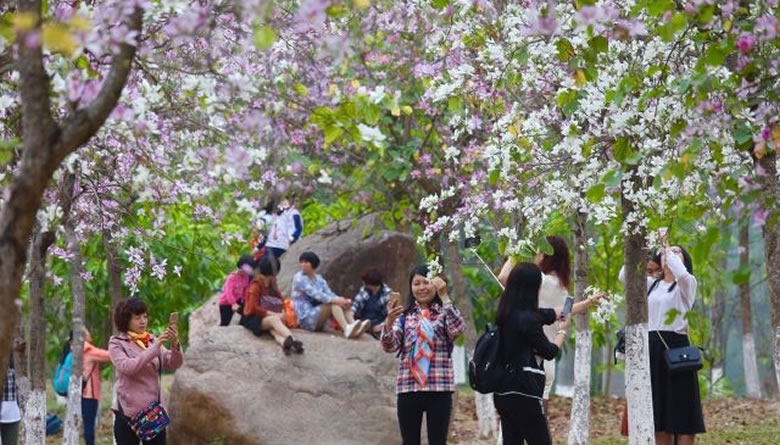一根丝串起古今中外,一匹绸书写杭州历史
|
2008年8月9日上午,位于北京奥林匹克公园内的“中国故事”正式开幕。浙江的“祥云小屋”内也以绚丽的丝绸开讲江南的美妙。一幅数米见方的大幅织锦“西湖全景图”拉开了“浙江丝绸故事”的序幕。 今秋邂逅G20峰会,杭州丝绸将再一次向世界问好。 千里迢迢来杭州,半为西湖半为绸 杭州丝绸的巨大吸引力,甚至不亚于美丽的西湖。人们向往杭州这座丝绸般秀美的城市,既钟情于风光旖旎、美不胜收的西子湖,也爱慕那色彩缤纷、优美华贵的丝织品。  湖州是中国著名的蚕乡,也是世界丝绸文明的发祥地之一。1958年,在湖州南郊的钱山漾出土了一批丝线、丝带和没有碳化的绢片。经中国科学院考古研究所测定,确定绢的年代为距今4700多年前的良渚文化早期,这是目前世界上发现并已确定的最早的丝绸织物成品。2015年6月,钱山漾文化遗址已被正式命名为“世界丝绸之源”。 春秋时代,越王勾践以“奖励农桑”为富国政策。相传古代美女西施在被献于吴王夫差之前,曾在家乡诸暨浦阳江畔的苎萝村养蚕织帛,常浣纱于村旁江边。后人在江边立石纪念,刻“浣纱”二字,还在附近建“浣纱亭”。这一美丽的历史传说,成了当时越国乡村已生产丝织品的佐证。  进入唐代之后,随着杭州城市规模的进一步扩大,丝绸生产得到了长足发展,丝织品的品种也更加丰富。唐穆宗长庆二至四年(公元822-824年)间,担任杭州刺史的大诗人白居易所写的《杭州春望》一诗中有“红袖织绫夸柿蒂,青旗沽酒趁梨花”之句。诗中提到的“柿蒂”,即为当时杭州盛产的柿蒂花绫。 南宋定都杭州,改名临安,历时150余年。当时杭州丝织业盛极一时,仅官营织锦院就有雇工数千、织机数百,私营纺机也有很大发展。《梦粱录》所列丝织品就有绫、锦、绢、罗、纱、绸等10多个品种,杭州城内呈现“机杼之声,比户相闻”和“都民女士,罗绮如云”的盛况。  明、清时期杭州丝绸丝织手工业发展很快,家庭小绸坊充盈大街小巷,当时有“日出万绸,衣被天下”之誉。清康熙皇帝在《桑赋序》中写道:“朕巡浙西,桑树被野,天下丝绸之供,皆在东南,而蚕桑之盛,唯此一区。” 新中国成立后,在国家外事活动中,杭州丝绸也成为礼送国外首脑和贵宾的首选,它传递着中华文明,成为东、西方文化传播与交流的美丽使者。 2009年9月30日,在阿联酋首都阿布扎比召开的联合国教科文组织保护非物质文化遗产政府间委员会会议决定,“中国蚕桑丝织技艺”入选《人类非物质文化遗产代表作名录》。杭州丝绸中的“杭罗织造技艺”作为“中国蚕桑丝织技艺”中的重要代表性项目,正式加入“世遗”,为杭州丝绸历史文化书写了浓重一笔。  丝绸不只是一种单纯的生活消费品,她承载了杭州人的生活情趣、历史情怀和艺术感悟。在长期的丝绸生产和生活实践中形成的杭州丝绸文化,集中反映在与丝绸相关的历史记载、文物遗迹、故事传说、诗词篇章、人物传记、习俗禁忌及蚕桑丝绸生产、商贸等各个领域之中,彰显杭州深厚的文化底蕴。 “城市即文化,文化即城市”。丝绸文化是杭州文化的物化代表,它显示着杭州发展的独特优势。当杭州丝绸文化与城市经济运行相融合,犹如给杭州这座城市的核心竞争力装上了助推器。700年前,当意大利旅行家马可·波罗踏上东方这片神秘土地的刹那,他可能不知道这条连接东西方文化和商业的“丝绸之路”在几百年之后被赋予了新的意义。  用最动人的丝绸细节,助力杭州打动世界 杭州丝绸城古承钱塘蚕桑之盛,今得江南富庶之利,鹤立于全国同类市场之首。杭州中国丝绸博物馆已成为博大精深丝绸文化的神圣殿堂。就连杭州的普通市民也在为丝绸文化事业增辉添彩。 自去年下半年起,来自靖江街道的叶建明、王孝琴、叶沣仪一家三口一直在做一件有意义的事——以全家最为擅长的“丝绸画缋”手工技艺,制作一幅献礼G20的主题作品,迎接家门口的世界盛会。到上月底,这件作品终于顺利完工。  作品以杭州特色丝绸为材质,用色彩、线条等勾勒出西湖十景、钱江涌潮和包括G20峰会举办地“奥体中心”在内的两岸地标建筑,同时配以五爪金龙、七彩祥云、如意锦鲤等“中国元素”,充分体现东方文化内涵。叶沣仪说,创作这件作品的初衷,就是想从普通市民的角度,表现对各国来宾的热忱欢迎和良好祝愿。 唐代诗人李商隐曾对丝绸有“万里云罗一雁飞”的美赞。如今,丝绸不仅代表了中国源远流长的文化和历史,她也正慢慢与文化产业结合,塑造出新的可能,为产品添加更多“时尚元素”。  万事利是一家在杭州土生土长的丝绸企业,自从在2008年北京奥运会以一袭青花瓷礼服名噪一时之后,万事利一直新闻不断——斥巨资从国外赎回同治皇帝的真丝龙袍;花费三年时间从法国吉美博物馆复制了12幅敦煌藏经洞流失海外百年之久的千年古绢画;收购了法国顶级丝绸品牌MARC ROZIER;2015年“居然”聘请了前爱马仕纺织控股集团CEO担任企业品牌运营高管;万事利集团总裁李建华甚至作为中国企业家第一人登上央视《百家讲坛》开讲《红楼梦丝绸密码》;就在前不久,万事利集团还创下了一个世界之最——研发成功了目前世界上最薄的丝绸。 “G20峰会之于杭州不是短短两三天的会议,而是世界人民对杭州的认同,我们要精心挖掘和展现这个城市‘最杭州’‘最个性’‘最动人’的一面,这其中怎能少了千古绝唱的丝绸元素?”万事利集团董事局主席屠红燕说。  古老的丝绸之路,今天又迎来促进国际贸易、文化交流与和平之旅的春天。“在古老的丝绸之路上,杭州是东方的起点,它和古代海上丝绸之路起点泉州刺桐港是并驾齐驱的。”外交部相关专家表示,杭州将中国的文化传播到世界,将世界的文化带到中国,见证了古老丝绸之路的风云变幻,是海上丝绸之路上的璀璨明珠。 “一带一路”的国策将成为杭州丝绸快速发展的战略机遇。 事实上,杭州已成功举办了六届中国国际丝绸论坛,每届论坛都是一次世界丝绸产业的盛会,高朋满座,灼见纷呈,这也是世界丝绸产业界规模显赫、主题鲜明的同行交流,促进了了解和互信,也促进了世界丝绸产业的互动发展。杭州已成为世界丝绸产业界的交流中心。  另一方面,中国国际丝绸博览会也已在杭州连续举办十六届,这是中国商务部和杭州市人民政府共同主办的全球规模最大的丝绸专业展会。展会营造了杭州作为世界丝绸贸易中心的浓厚氛围,形成了“世界丝绸看中国,中国丝绸看杭州”的共识。 G20峰会,将引领世界进一步认识杭州,“一带一路”也将带领杭州阔步走向世界。而丝绸,无疑是不可或缺的重要的文化使者。  The history and culture of Zhejiang are interwoven with silk. Mulberry trees, silkworm farms, silk shops and factories can be found across the province in the south of Shanghai. The beautiful, soft and tender fabric made by the people of Zhejiang is a key chapter of the history of silk of China. The fact that the National Silk Museum of China is in Hangzhou speaks fluently and convincingly of the importance of the city as a silk producer. That also explains why Zhejiang so proudly displayed silk in the Olympic Park of Beijing on August 9, 2008. A brocade tapestry on display, about several square meters large, presented a vista of the West Lake, the most beautiful lake of China. It was part of the silk presentation of Zhejiang to the world.  The silk story of Zhejiang can be told in the light of silk remains unearthed in 1958 at Qianshanyang in the southern suburb of Huzhou in northern Zhejiang. The remains go back to about 4,700 years ago, which equals to the early phase of Liangzhu Culture which flourished in what is now Zhejiang in the prehistoric times. The silk threads, silk bands and silk fabrics unearthed at the site are the most ancient silk products of the world. Silk production can be seen in the story of Xi Shi, a beauty of the Warring States period more than 2,200 years ago. The girl was engaged in silk farming in her old home before she was presented to King Fuchai of the Wu State. The legend of Xi Shi testifies to the sericulture in Zhejiang two millennia ago.  Hangzhou became a national powerhouse of silk in the Tang Dynasty (618-907). When the city housed the royal family of the Southern Song Dynasty (1127-1279), silk producers thrived. Historical documentation indicates that a silk factory owned by the government employed several thousands of workers and operated hundreds of looms. A book written during the dynasty says that there were more than ten different silk products made in the city. During the Ming and the Qing that spanned from the 14th to the early 20th century, Hangzhou flourished as a center of silk making. Northern Zhejiang was the country’s biggest textile producer. After the founding of the People’s Republic of China in 1949, silk made in Hangzhou was often presented as state gift to foreign state heads visiting China.  In September, 2009, the Sericulture and Silk Craftsmanship of China was inscribed on the Representative List of Intangible Cultural Heritage of Humanity by UNESCO. A fine satin produced in Hangzhou is part of the key representatives of the heritage, which makes Hangzhou a key part of the heritage. Silk is a part of the city’s history and culture. It is more than a consumer product. It also represents life, culture, history and art of the city. History has ample records of the city’s engagement in silk production. More than that, the city boasts a big wealth of silk-related stories, legends, poems, biographies, lifestyle, taboos and customs.  Wensli is a flagship silk business in Hangzhou. It made its national and international renown in 2008 when the silk award dresses made by Wensli for the Olympic Games 2008 Beijing attracted the attention of the world. Since 2008, Wensli has endeavored to go international and never looked back. It bought back from an international collector a silk imperial gown Emperor Tongzhi of the Qing (1644-1911) once wore. It reproduced 12 ancient Chinese silk paintings in the collection of Musée Guimet, France. It purchased Marc Rozier, a French fashion brand. Li Jianhua, CEO of Wensli, appeared in a CCTV program and spoke on the silk described in the timeless classical novel The Dream of Red Mansion. Just the other day, Wensli announced that it had invented the world’s thinnest silk.  Experts with the Ministry of Foreign Affairs confirm that Hangzhou used to be the departure point of the ancient Silk Road. The Belt & Road Initiative is a new opportunity for Hangzhou to grow stronger as a giant exporter. Hangzhou has hosted an international symposium on silk six times and hosted China International Silk Expo for sixteen consecutive times. Jointly sponsored by the Ministry of Commerce and the Hangzhou Municipal People’s Government, the expo is the world’s biggest silk event. |
|
关键词:G20峰会,杭州,丝绸 |


 今年两会 总书...
今年两会 总书... 是否避让救护...
是否避让救护... 教育减负,受...
教育减负,受... 大学赏花需要...
大学赏花需要... 【观点新闻】...
【观点新闻】... 【观点新闻】...
【观点新闻】...